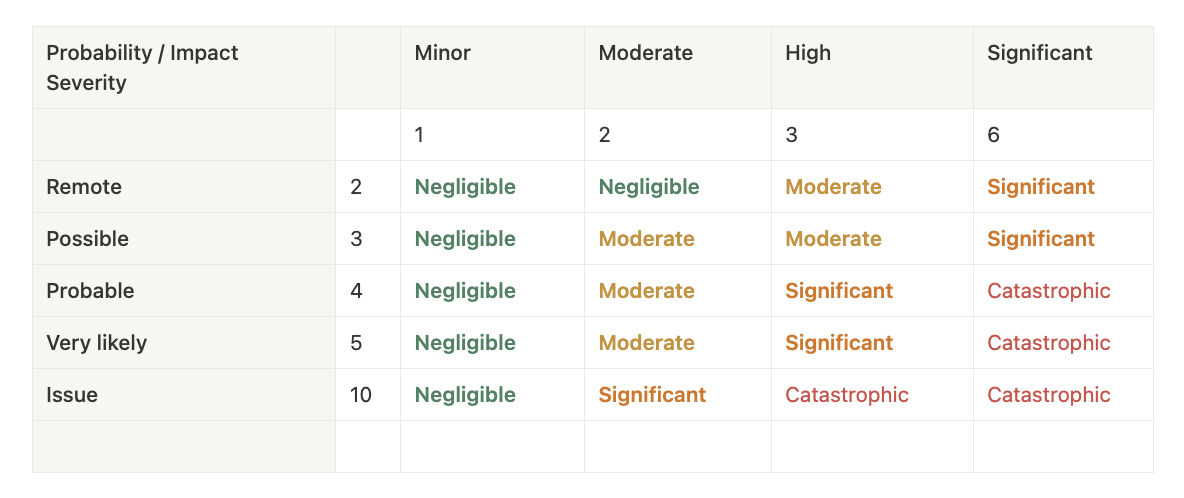 Written by Andrew Semal, Delivery Manager at Neurons Lab
Written by Andrew Semal, Delivery Manager at Neurons Lab
While Artificial Intelligence and Machine Learning offer new and exciting business opportunities, they also come with their share of challenges. Throughout my experience in this industry, I have witnessed the pain points that organizations face when delivering AI projects.
These include the lack of frameworks for identifying and mitigating AI-related risks, difficulties in gaining support for risk management initiatives, and projects exceeding budget or timeline due to risks of stakeholder dissatisfaction when objectives are not met or issues arise.
Additionally, there is a concern about damage caused by releasing risky AI systems without proper oversight and a need for broader organizational support for comprehensive risk identification and mitigation activities.
In this blog post, I’ll delve into these challenges and recommend strategies that can be used to effectively navigate the risks associated with developing and delivering AI solutions.
By the end of the article, you will understand how to manage risks in AI delivery, obtain buy-in for risk management efforts, prepare for unexpected obstacles, engage stakeholders efficiently, and foster a culture that prioritizes risk awareness within your organization.
1. Implement a Risk Management Framework
Effective AI risk management starts with implementing a risk management framework. It’s vital to recognize that managing risks in AI isn’t solely about maneuvering through technical issues or data-related problems – it’s about identifying and addressing AI’s broader ethical, social, and legal implications.
Risk assessment in AI isn’t a one-time task but a continuous, evolving process. A proactive risk management approach allows organizations to spot potential threats early on and devise strategies to counter them effectively, leading to a smoother AI delivery process.
In developing a risk management framework, a few considerations are crucial. Firstly, the framework must be tailored to your organization’s specific needs and context and the AI projects in hand.
Generic frameworks can provide a starting point, but they might not cover all the unique risks your projects might face. Secondly, the framework should be flexible and adaptable to accommodate the rapidly changing landscape of AI technologies and regulations.
An example of the risk management framework that is presented below is divided into four stages: identification, assessment, mitigation, and monitoring and reporting.

During the identification phase, the goal is to create a list of all risks that could potentially impact the project. This involves reviewing the project plan, consulting with team members, and collaborating with the client to identify risks. In the risk identification phase, the Risk Register plays a crucial role. It acts as a repository where identified risks are recorded, evaluated, and kept up to date. Serving as a source of information, the Risk Register supports risk management efforts and facilitates timely decision-making in addressing potential threats and opportunities. An example of a Risk Register and a Risk Rating Matrix is available below. Neurons Lab uses Notion to create and manage these tables.
Risk Register

Risk Matrix

In the assessment phase, our aim is to evaluate and prioritize each identified risk by determining its likelihood of occurring and its potential impact. The objective is to understand the rating of each risk and prioritize them accordingly. This includes assessing probability and impact, assigning risk ratings, and discussing risks in detail with stakeholders.
Next comes the mitigation phase, where we concentrate on developing and implementing measures to reduce both the severity and likelihood of risks to an acceptable level. The objective is to manage and address identified risks. This involves creating response plans for each risk, executing them, monitoring their effectiveness, and communicating risks as actions taken to stakeholders.
Lastly, we have the monitoring and reporting phase, which aims at tracking risks along with measures in place. We gather data on these aspects to provide updates on risks and evaluate how effective our risk management activities have been. The main purpose here is to ensure awareness about risks while keeping stakeholders informed. This includes keeping an eye on known risks, consistently evaluating the risk matrix, providing updates on risks, performing thorough risk assessments, and fostering a culture of risk awareness by reflecting on past experiences.
In general, this approach illustrates a way to recognize, evaluate, alleviate, and oversee risks from start to finish in a project’s lifespan.
2. Secure Executive Buy-In and Support
Getting buy-in from executives is fundamental to effectively managing AI risks. Sometimes, the excitement surrounding groundbreaking AI solutions overshadows the task of risk management. It is essential to convey to executives that investing in risk management is not an expense but a preventive measure against financial losses and damage to reputation.
To achieve this, you need a clear and compelling narrative that resonates with your top management. Begin by educating your executives about the potential risks associated with AI, using real-world examples, case studies, and industry statistics to bolster your argument. Show them how neglecting AI risks could lead to severe consequences, including financial loss, reputational damage, and legal issues.
Also, it demonstrates how proactive risk management can lead to cost savings in the long run by avoiding these pitfalls. Remember, the goal is not to induce fear but to foster understanding and gain their support for your risk management initiatives.
3. Plan for the Unexpected
Unforeseen risks often cause AI projects to go over budget or exceed their timelines. This is why it’s essential to always have a Plan B. We recommend incorporating a risk buffer in your project plan. This could mean setting aside additional time for testing and validation, creating a contingency budget, or preparing alternative plans. The AI Design Sprint framework, with its emphasis on rapid prototyping and iterative solution validation, is well-suited for this kind of proactive and flexible planning.
One way to effectively plan for the unexpected is by conducting thorough risk assessments at the beginning of your projects and revisiting them regularly. This will help you identify potential threats and plan your resources accordingly.
Also, consider using risk management tools and methodologies like SWOT analysis to forecast potential risks and their impacts better. Remember, the more prepared you are, the more resilient you’ll be when faced with unexpected challenges.
4. Consistent and Transparent Stakeholder Engagement
Stakeholder dissatisfaction often arises from unmet expectations or unpleasant surprises. To mitigate this risk, it’s crucial to engage your stakeholders right from the early stages of the project. Keep them informed throughout the project’s lifecycle. Share your risk management plan, discuss potential challenges, and explain your strategies to tackle these risks.
Consistent and transparent communication is the key here. Use regular meetings, reports, and updates to keep everyone on the same page. Also, invite feedback and suggestions from your stakeholders. This keeps them involved and helps you gather diverse perspectives, which can be invaluable in identifying and managing risks. Regular communication not only helps manage expectations but also builds trust in your ability to deliver a safe and effective AI solution.
5. Foster a Culture of Risk Awareness
Encouraging a culture of risk awareness within your organization is integral to effective AI risk management. Everyone involved in the AI delivery process – from data scientists to developers to executives – should understand the potential risks associated with their work and their roles in managing them.
To instill this risk-aware culture, consider organizing regular training sessions, workshops, and discussions about AI risks and risk management strategies. Use these platforms to share insights about the latest trends and developments in AI risk management.
Remember, when everyone understands the significance of risk management and their role in it, they’re more likely to take ownership and contribute positively towards managing risks.
6. Regularly Review and Update Your Risk Management Strategies
The landscape of AI and ML is constantly evolving, with new technologies and methodologies emerging regularly. Consequently, the associated risks and their potential impacts can change over time. It’s essential to regularly review and update your risk management strategies to reflect these changes. This could involve reassessing your risk identification and assessment processes, updating your risk mitigation strategies, and revising your contingency plans.
Also, keep an eye on the latest regulatory changes and industry best practices and incorporate them into your strategy. Regular reviews ensure that your risk management approach remains effective and relevant and can address the current and emerging risks in the AI industry.
In this article, you’ll find a detailed and clickable list of AI risks from McKinsey (Exhibit 2).
7. Learn from Mistakes and Iterate
It’s important to understand that risk management is not a static process. Mistakes are bound to happen, and risks might materialize despite your best efforts. What’s crucial is how you learn from these instances. Post-project reviews and evaluations can provide valuable insights into what worked and what didn’t.
Use these learnings to iterate and improve your risk management strategies for future projects. This could be as simple as tweaking your risk identification processes or involve a complete overhaul of your risk management framework. The key is to learn, adapt, and improve, turning every challenge into an opportunity for growth.
In conclusion, the goal isn’t to eradicate all risks – that’s simply not feasible. Instead, we should strive to foster a culture of risk awareness and proactive risk management. By adopting a robust risk management framework, securing executive buy-in, planning for unexpected challenges, engaging stakeholders effectively, regularly updating risk management strategies, and learning from past mistakes, organizations can navigate the complexities and potential pitfalls of AI projects. A proactive approach to risk management not only prevents issues but also leads to happier clients, on-time deliveries, and new opportunities for growth and innovation.
This approach will shield your organization from potential pitfalls and pave the way for the successful delivery of AI solutions. By embracing these seven tips, we can ensure that we’re not just creating advanced AI solutions but we’re also doing so in a way that is safe, responsible, and beneficial for everyone involved.
The path to AI delivery might be fraught with challenges, but with effective risk management, we can turn these challenges into opportunities for learning and growth. With awareness, preparation, and the right strategies, we can deliver AI solutions that truly make a difference.
About Neurons Lab
Neurons Lab is an AI consultancy that provides end-to-end services – from identifying high-impact AI applications to integrating and scaling the technology. We empower companies to capitalize on AI’s capabilities.
As 1 of 18 certified AWS partners in Applied AI globally, our goal is to help businesses to unlock the full potential of AI technologies with support from our diverse and highly skilled team, made up of applied scientists and PhDs, industry experts, data scientists, AI developers, cloud specialists, user design experts and business strategists with international expertise from across a variety of industries.
Get in touch with the team to discuss your next AI initiative.









